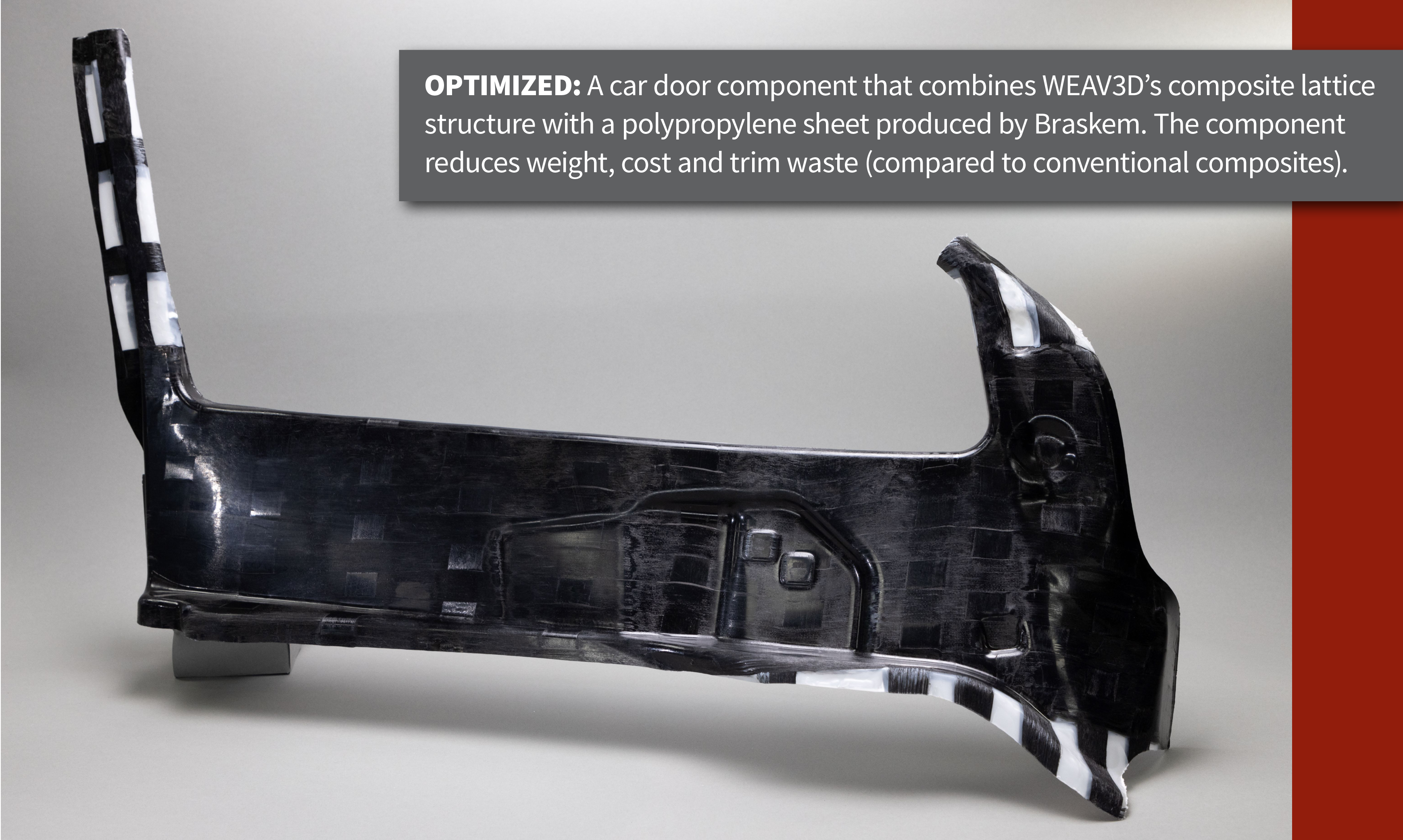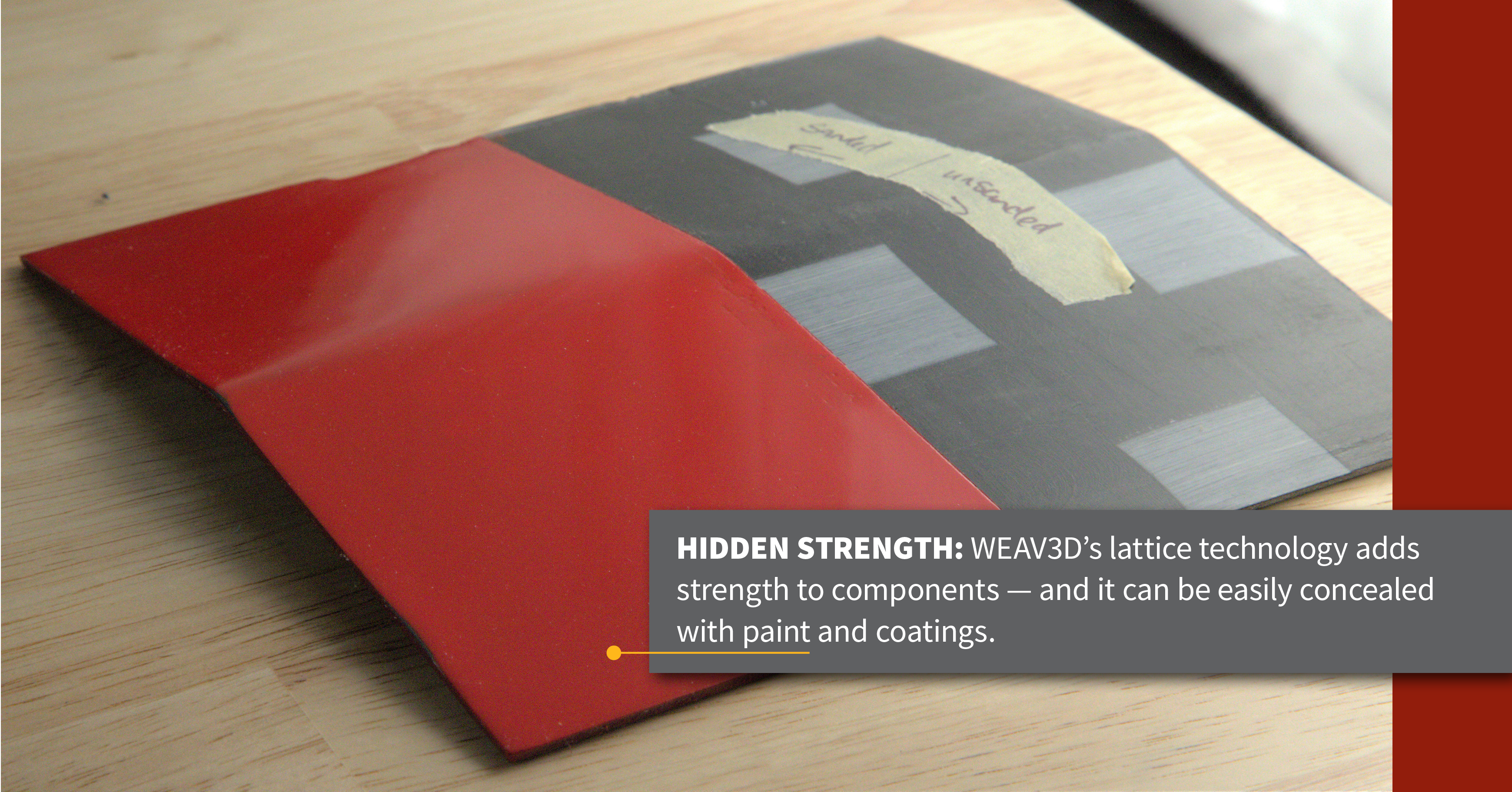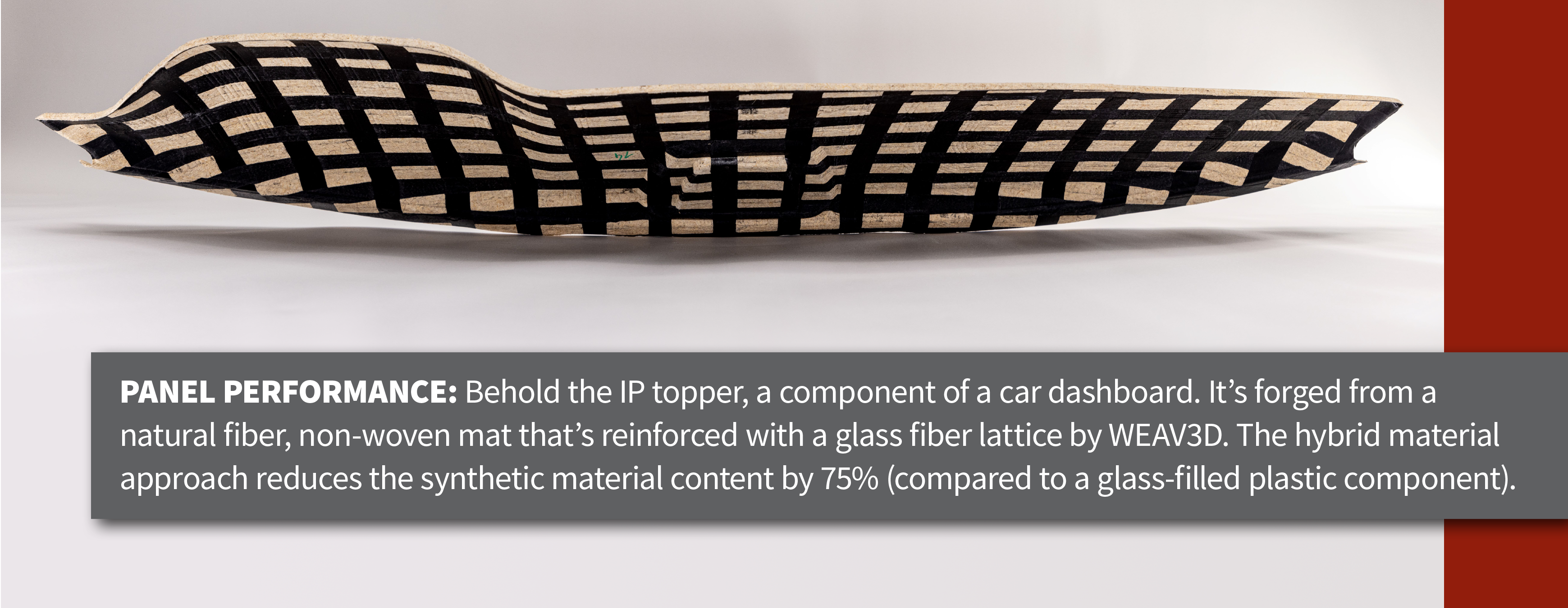

But some people do, and Chris Oberste is one of them.
While a graduate student at Georgia Tech, Oberste researched and developed a new technology to create structural reinforcements for plastic parts. Not long after, he and co-founder Lewis Motion launched a company, WEAV3D®, to bring the technology to market – and GRA became one of the first investors.
Rebar for Plastics™ is the shorthand for what WEAV3D’s technology produces. Just as steel bars and mesh add strength to concrete and masonry, the structural “lattices” produced by the WEAV3D machine do the same for plastics and other materials.

A (VERY) FINE-TUNED PLASTIC: Today’s reinforced plastic components have a set amount of stiffness and strength. Their rigidity and load capacity are fixed.
But WEAV3D can engineer and produce a component that has different degrees of stiffness and strength within different areas of a single component. They call this “tunability” — the technology can tune the physical properties of different areas within the lattice (by varying density and reinforcement materials).
Another differentiator: Components made with WEAV3D’s reinforcement lattices also weigh less than components made with conventional methods.

WHO WOULD BUY THIS: Auto manufacturers are the front-line market, and for good reason.
The inside of every vehicle is a world of plastic, contoured and fitted to create a driving and riding experience. Underneath much of this plastic, hidden from view, is a metal part for reinforcement.
WEAV3D could eliminate the metal reinforcement part altogether by making the plastic component itself stronger. Manufacturers could use WEAV3D’s technology to “build in” the lattice, saving 25% in weight without altering the shape or design of the component.
Better yet, plastic parts made with WEAV3D reinforcement lattices could replace large sheet metal parts, commonly used in the body of the car – they would be just as strong but weigh 60% less.
All of this makes WEAV3D’s lattices a game-changer. “The auto industry needs lightweight materials for components to satisfy fuel economy regulations,” says Oberste. “We’ve found a way to reduce weight without compromising the structure or performance of the component.”

AUTOMAKERS WILL ALSO LIKE THIS: Aside from reducing weight, WEAV3D’s lattice technology saves money on manufacturing components (as much as 75% off the cost of traditional components).
AND THIS: WEAV3D lattices have a sustainability story. The auto industry seeks to use more natural fibers and eco-friendly materials in vehicle components. That’s because parts reinforced with natural fibers weigh much less than those reinforced with synthetic materials.
The problem is, it’s hard to get consistent performance out of natural fibers, as their properties differ year to year, depending on their crops of origin. WEAV3D lattices can make up the difference in this consistency, allowing automakers to expand use of natural materials (and assure reliable performance).
THIS TOO: WEAV3D has made great progress integrating electricity-conductive tapes and films into its lattices so that components can become even more functional. Plastic components in the car with WEAV3D technology could accommodate LED lighting more readily – or even generate data from accidents.

WHERE’S THE SWEET SPOT: It’s between zero reinforcement and premium reinforcement – the uniqueness of WEAV3D technology places the company right in the middle. Using WEAV3D, manufacturers can strengthen parts with a single lattice component able to handle varying load demands – but at a fraction of the cost of other structural reinforcements.
POWER TO THE MAKER: While WEAV3D knows how to optimize its reinforcement lattice parts, the company is developing software to give vehicle manufacturers that same capability.
“In collaboration with simulation partners, we’re on track to roll out a software product available by mid- to late 2024,” Oberste says. “This would give manufacturers the ability to enter in design requirements. From those, a selection of optimized lattice structures would result to meet the requirements.”
The vision, he adds, is to empower automakers with creating a new generation of components – each fully optimized for strength, weight, function and form.